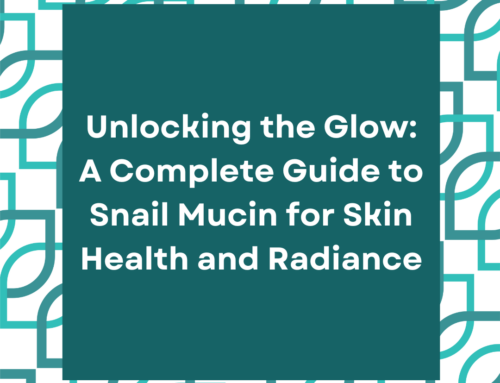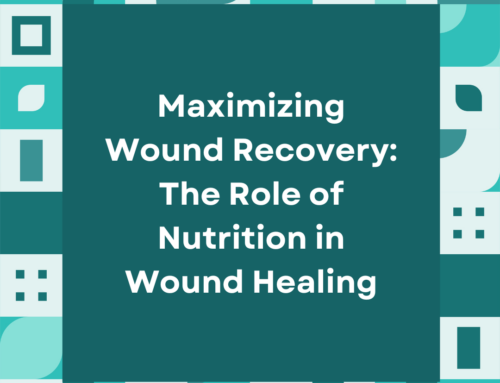Is there a link between exercise and scar healing?
If you’re curious about the impact of exercise and scar healing, look no further. This comprehensive article breaks down how strategic exercise can aid skin scar recovery, drawing on the insights of healthcare professionals and the latest research. We’ll reveal how exercise stimulates blood circulation and immune responses, contributing to effective exercise and scar healing, and guide you through the safe and appropriate exercises specially designed for this purpose. You’ll also learn about essential precautions to ensure your healing journey is safe and successful.
Key Takeaways of Scar Healing
- Exercise enhances scar healing by increasing sweat production that promotes tissue repair, boosting immune defense, and improving blood flow and oxygenation to the affected area.
- Physical therapy, including specialized techniques like scar tissue massage and stretching exercises, plays a crucial role in managing scars by optimizing the healing process, improving flexibility and strength, and preventing contractures.
- While exercise can aid scar recovery, it’s essential to tailor activities to avoid stress on healing tissues, ensure proper wound care and sun protection, and potentially combine with treatments like silicone gel products and massage therapy for optimal results.
The Scar Healing Power of Exercise
You might have noticed that a wound tends to heal faster when you’re active. That’s not a fluke. Exercise has unique properties that promote wound healing, even influencing the appearance and management of scars. It all boils down to your body’s response to physical activity.
Exercise triggers the production of sweat rich in substances that prompt tissue repair and growth. This phenomenon, coupled with the improved immune defense and metabolic health post-exercise, sets the stage for a faster, more efficient healing process.
The stimulation and recirculation of immune cells like neutrophils and natural killer cells further boost immune regulation, positively impacting scar healing.
Oxygenation and Blood Flow
Exercise confers benefits that go beyond just enhancing immune function. When we move, our heart pumps faster, delivering more blood and precious oxygen to all parts of the body, including wounds. This increased blood flow and oxygenation are fundamental for wound healing as they nourish the affected area, accelerating the healing process and promoting the growth of healthy tissue.
Studies on young mice have shown that the duration, intensity, and frequency of exercise can significantly speed up wound healing rates. While this research is still in its early stages, it provides a promising glimpse into the potential benefits of exercise for human scar healing.
Immune Function
Exercise also fascinatingly improves immune function. It’s akin to having an army ready to defend the body and promote healing. Acute exercise acts as an immune system adjuvant, improving defense activity and metabolic health, which are crucial for scar healing.
Each exercise bout leads to a temporary increase in immune cells and mediators. Over time, these increases lower inflammation, improving immunosurveillance against pathogens, cancer cells, and skin cells. This means your immune system becomes more efficient, giving your body a leg up when it comes to healing scars.
The Role of Physical Therapy in Scar Management
While personal exercise routines can clearly aid scar healing, the importance of physical therapy cannot be overlooked. Physical therapy provides a more structured approach to exercise, optimizing the benefits for scar healing.
Scar management involves specialized techniques that physical therapists employ, assessing which movements are beneficial for healing, and guiding patients in progressively advancing these movements for continued scar management. This approach is particularly beneficial in managing scar formation in burn patients, where the range of movement can be significantly restricted.
In addition, physical therapy plays a role in the scar maturation process by enhancing tissue strength and promoting gliding, further improving function.
Scar Tissue Healing Massage
Scar tissue massage is one of the specialized techniques physical therapists utilize, also known as scar mobilization. This technique uses various methods like cross-friction massage to align collagen fibers and remodel scar tissue, improving recovery. Scar massage helps in achieving these improvements.
Current research, including studies in meta-analyses, indicates that massage may significantly improve the pliability and reduce the thickness of scars, though the effectiveness of instrument-assisted massage is yet to be compellingly proven.
Regardless, the safe practice of self-massage, with the use of lubricants such as baby oil, lotion, or vitamin E oil, can significantly enhance the flexibility and softness of the scar.
Stretching and Strengthening Exercises
In addition to massage, stretching and strengthening exercises can be helpful in scar management, though not all of the time. These exercises aid in elongating scar tissue, improving flexibility, and range of motion.
Stretching exercises are particularly beneficial for managing hypertrophic scars after burn injuries and preventing contractures by improving the scar’s physical properties. It is important to note that for some scar types, tension and movement in the area can lead to excess scar tissue deposition.
It is highly important to speak with a healthcare professional to understand what is best for your specific case.
Strengthening exercises, on the other hand, aid in regaining balance and control in operated areas, helping rebuild muscle strength, enhancing functional recovery, and supporting the wound healing process.
Low-impact strengthening activities like strength training, yoga, and Pilates can be safely incorporated into a recovery regimen to assist in healing without irritating the wound.
Choosing the Right Exercise for Your Scar
Although the benefits of exercise for scar healing are evident, the selection of the right exercise for your scar might be a challenge. The answer lies in selecting physical activities that do not put stress on the healing scar tissue and tailoring exercises to the scar location. Some examples of exercises that are generally safe for scar healing include:
- Walking
- Swimming
- Cycling
- Yoga
- Pilates
Remember to always consult with your healthcare provider before starting any exercise program, especially if you have a fresh or sensitive scar.
For instance, low-risk injuries may benefit from basic lunges, planks, crunches, and jumping jacks, as these enhance oxygen delivery to the injured tissue.
Early Controlled Exercise Programs
Early controlled exercise programs provide an effective approach to choosing the appropriate post-injury exercise. These programs focus on:
- Preventing scar tissue from hardening in a way that restricts mobility
- Engaging in early stage exercises for scar tissue flexibility
- Maintaining movement and preventing stiffness around the scar area
Exercise aids such as toweling or assistive devices like dowels can provide necessary support for performing safe shoulder mobility exercises post-surgery. Exercises like shoulder blade squeezes and rows using an elastic band strengthen muscles adjacent to the scar without creating further strain, aiding in effective scar management.
Tailoring Exercise to Scar Location
Designing exercises based on the scar location can enhance the healing process and ensure effective recovery. For scars located on the upper body, specially designed exercises can enhance flexibility and strengthen muscles to support scar healing.
For instance, post-breast surgery exercises, such as raising the hand vertically over the head and stretching arms to the side, are recommended to manage scar tissue effectively.
Individuals recovering from complex breast surgeries can benefit from tailored guidance by physical therapists for safe and effective exercises.
When selecting stretches for scar management, it’s crucial to choose those that specifically target the scar area and perform them with enough duration to effectively lengthen the tissue.
Precautions and Considerations for Exercising with Scars
Despite the numerous benefits of exercise in scar healing, it is necessary to exercise some precautions. Exercising with scars requires proper wound care and sun protection, and careful consideration of potential risks to ensure effective healing.
Increased physical activity may lead to a higher risk of wound disruption and additional scarring, necessitating careful exercise selection and scar support.
Proper Wound Care
Successful scar healing during exercise hinges on proper wound care. This includes:
- Selecting an appropriate wound dressing
- Regularly assessing the wound’s condition to ensure effective healing
- Tailoring wound dressings to the wound’s moisture level
- Changing dressings regularly to prevent infection or aggravating the wound
- Using atraumatic dressing removal techniques
- Using dressings that stay in place to avoid additional damage during exercise and dressing changes
Prior to exercising, it is essential to get medical approval, particularly for activities that apply pressure to the wound, such as scar massage or stretching exercises. For recently formed scars or wounds, shielding the area with gauze before putting on sunblock tape or other coverings can avoid reopening the wound.
Sun Protection
Protecting your superficial skin from the sun is another important aspect to consider when exercising with scars, especially for those with normal skin. Scars are more sensitive to sunlight and may darken if not adequately protected, so applying sunscreen before outdoor activities is crucial.
One effective method of sun protection is the use of sunblock tape, which offers UPF 50+ protection. Sunblock tape:
- is designed to be gentle on the skin
- conforms to body contours
- remains in place during physical activities, making it suitable for exercise
- is waterproof
- stays on without becoming more aggressive as body temperature rises, ensuring comfort and continuous protection.
Plus, it’s available in various forms, including full tubes, pre-cut strips, and adhesive patches, which can be trimmed to size if necessary.
Complementary Scar Healing Treatment Options
Complementary skin scar treatment options, along with exercise and physical therapy, can augment scar healing and recovery. These include:
- Laser Therapy
- Extracorporeal Shock Wave Therapy (ESWT)
- Post-surgery support bras
- Silicone gel products
- Massage therapy
These options can help improve the appearance and flexibility of burn scars.
Silicone Gel Products
For over 30 years, Silicone gel sheeting (SGS) has been a mainstay in scar therapy and is endorsed by healthcare professionals worldwide as the first-line treatment for scars. SGS works by hydrating the scar tissue, which helps to soften and remodel the scar, while its occlusive nature reduces overactive cellular activity and excess collagen that contribute to scar formation.
Silicone gel products are proven to prevent and reduce hypertrophic scars, keloids, and scars resulting from burns, making them a versatile tool in scar management. Patients find silicone-based products beneficial due to their non-invasive nature, ease of use, and relatively low cost compared to other scar treatment options.
Massage Therapy
Alongside Silicone gel products, massage therapy is another complementary treatment that substantially aids scar healing. Professional massage therapy aids in promoting scar healing by breaking up the scar tissue, which increases pliability and reduces the chronic pain related to the scar area. Techniques like myofascial release, which involves massaging the skin and underlying tissues, are effective in managing scar tissue and adhesions.
Self-massage of scars is considered safe after full wound healing and can be made more effective with the use of water-based cream or plant oil as lubrication. In combination with other treatments such as ultrasound and strengthening exercises, massage therapy can alleviate post-surgery pain and facilitate healing.
Summary
In conclusion, healing scars is a multifaceted process that goes beyond wound care. The dynamic link between exercise, physical therapy, and scar healing offers promising possibilities for enhancing recovery and overall well-being.
Whether it’s through increased blood flow and oxygenation, improved immune function, or specialized techniques like scar tissue massage, the healing power of movement is undeniable.
Remember, your healing journey is unique, and while these insights offer guidance, it’s essential to always consult with healthcare professionals to ensure your approach to scar management is safe and effective.
Frequently Asked Questions About Exercise and Scar Healing
Does exercise help with scar healing?
Yes, exercise, including physical therapy, can help work through pain and prevent scar tissue during recovery.
Will exercise break up scar tissue?
Yes, exercise and physical therapy can help break up scar tissue, promoting better recovery with less pain.
What to avoid when healing a scar?
Avoid scratching or picking scabs on your healing scar, as this can lead to more inflammation and a higher likelihood of scarring.
What role does physical therapy play in scar management?
Physical therapy is crucial in scar management as it utilizes specialized techniques like scar tissue massage and stretching exercises to improve scar tissue properties and enhance recovery. It plays a significant role in enhancing scar tissue properties and aiding in recovery.
How can I choose the right exercise for my scar?
Choose exercises that don’t stress the healing tissue and adapt them to the location of your scar to avoid causing any damage. When in doubt, contact the Scar Healing Institute!
Schedule an Appointment
Scar Healing Institute
Scar Healing Institute is committed to developing the most effective treatments for scarring. Our team of scar revision specialists are continually inventing the latest technologies and formulas to deliver the best results for our patients.




